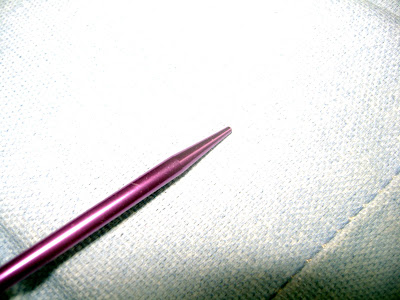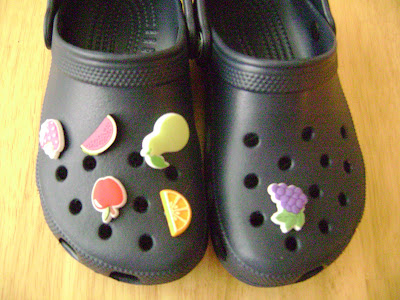"May my legend prosper and thrive. I wish it a long and happy life." -- Coco Chanel
That, in essence, is what makes Coco Chanel the single most famous fashion designer of the 20th century. Legend. Sure, she did some innovative stuff. Sure, she had some good ideas. Sure, she broke some rules. But ultimately, what Coco Chanel is most remembered for is being Coco Chanel - and not even herself, but the legend she made of herself. The real woman was something else entirely. But smart. She was damn smart.

Coco Chanel was born in 1883 in rural France. She had it rough; her father died when she was young, and by age twelve she was put in an orphanage, where she was taught to be a seamstress. On vacations she was sent to distant relatives, who showed her a bit more of the world. Eventually she went to work for a tailor, where she had an affair with one of the customers, moved to Paris, and decided the good life looked pretty good.
In 1913 she opened a millinery shop in Paris, and it didn't go so well. She went into bankruptcy and was forced to leave the city, taking up residence in the resort town of Deauville. Soon, with the help of another lover, she was back in the business of selling hats. Like Schiaparelli (who was a blood enemy and rival), she soon branched out into sportswear. She scandalized the fashion world by using jersey (tee shirt material; a very thin, super-small gauge knit fabric that is cut and sewn much like a woven) to fashion casual wear. Up until the advent of Chanel, jersey was only used to make underwear.
Very early on she had already settled on her signature style which, ultimately came down to simplicity. Simple fabrics, simple lines, and simple cuts. Occasionally she went wild and added some lace. By the early 1920s she'd begun producing a fairly extensive line of clothing. (Remember you can mouse over these for the year they were designed.)





And, by then, she had already introduced one of her very few original ideas: The Little Black Dress.




The LBD for short. Seriously. You read about fashion you will see it referred to as the LBD. It's that iconic.
You have to remember that when the LBD was introduced, mourning for loved ones was still very common (no antibiotics, no modern disease treatments, many more losses of young, vital people), and there were RULES about how long to wear black, and then going to 'half mourning' in gray or lavender, and well, you DIDN'T wear black unless you had to.
Until Chanel told women black was chic and elegant. And, well, I've got a couple little black dresses in my closet... don't you?
By the 1930s, Chanel was dressing - and SOCIALIZING - with royalty, in particular the British royal family, most notably the Duke of Westminster and the Duke of Windsor (one or the other of whom she was supposed to have had an affair with, possibly both; I can't keep up on who all she slept with and I doubt what she said in public about her conquests was the truth anyway). The thirties was a good era for Chanel, and she cranked out a lot of good stuff:





She did make stuff in colors other than black, just not that often. You can see, though, that she kept it simple and minimalist. Chanel said a lot about how fashion should be about the woman, not the dress. Of course in a more pithy, quotable way. "Look for the woman in the dress. If there is no woman, there is no dress." and like that.
World War Two hit, and most designers closed up shop and headed out, or dug in in Paris to hold on until they were liberated. Chanel? Chanel looked out for number one and shacked up at the Paris Ritz with Hans Gunther von Dincklage, a Nazi officer and spy. There are conflicting, muddled accounts, but it seems that Chanel once tried to lure a distant relative of Winston Churchill's to Paris during the occupation. Reasons why are argued, but I can't see how it would be for something GOOD, considering Nazi Germany held the city at the time.
After the war, Chanel moved to Switzerland to lay low. At one point she was chucked into jail for war crimes, but was eventually let out and nothing more was ever said of prosecution; most historians agree that she got off through intervention by the British royal family.
In 1954 Chanel returned to Paris (that takes some nerve, and I'm amazed no one ever firebombed her atelier or attacked her; memories of the occupation were long and still live on even NOW) and re-opened her shop. The French never again really wore Chanel clothing. It was the Americans and English who kept her in business. Chanel settled in, still at the Paris Ritz, though without her Nazi boyfriend, and proceeded to put into motion the tales and stories that eventually became the legend that is Coco Chanel.
Among other things, Chanel is often credited with inventing the women's suit, but it's not true. The suit, as in skirt-jacket-shirt, had been around for hundreds of years; in the court of Louis XIV, they wore a similar combo:

Obviously this isn't by Chanel. It's from the 1750s and is, essentially, a women's suit. There's a skirt, the 'petticoat' as it was known then, with a long shirt/coat over it, the 'robe', and instead of a shirt, a stomacher (a heavily decorated V shaped piece of fabric) was pinned or tied to the front of the corset. Dunno about you, but to me that's a really francy suit (typo on purpose). This style was known as the 'robe a la francaise'.
All Chanel did was update it in a big way. From 1927, in her usual black:


By 1937 - possibly earlier but this is the earliest one I could find - she had settled on that trademark four-pocket jacket:

From 1958, when she was still using it:

And on into 1994, when Karl Lagerfeld had taken over and was basically creating Chanel knock-offs:

The suit became the fallback for any kind of day wear semi-formal to formal occasion, and just like the LBD, we all have at least one of these in the closet. I've even got one in the trademark tweedy woven with the four pockets. I got it because it'll never go out of style; they've been making the damn things for going on a CENTURY. All that changes is the skirt length and the shirt under it.





In the 1970s, Karl Lagerfeld took over the reins of House of Chanel, and Chanel settled into semi-retirement, still gleefully swanning about at all sorts of social events. She passed away in her suite at the Paris Ritz in 1971, leaving behind a legacy of scandal, larger-than-life legend, and minimalist design principles. Say whatever you like about her methods or ethics, the woman was a survivor, and I think that ultimately, that is what made her so famous; she just bloody well outlasted everyone else.
Chanel was one of the first to advocate comfortable, functional clothing. Not just for sportswear, but evening too. And while little of what she did was truly original, she did set in motion some set-in-stone traditions that are still followed today by most women in the western world, namely the day suit and the little black dress.




































































